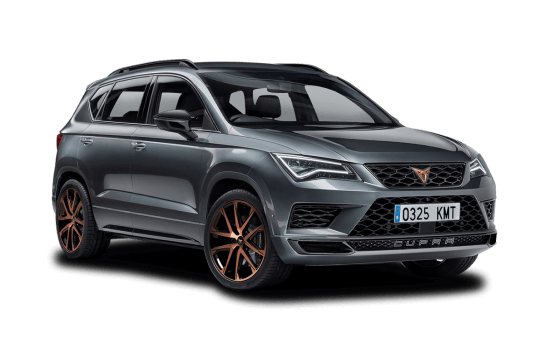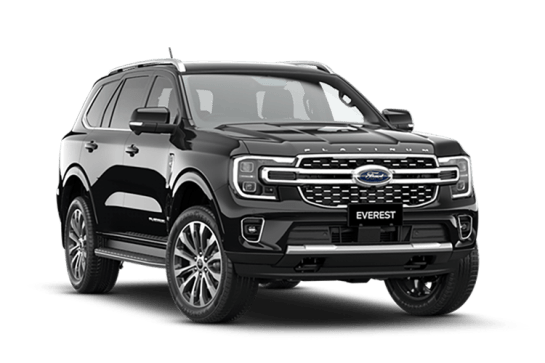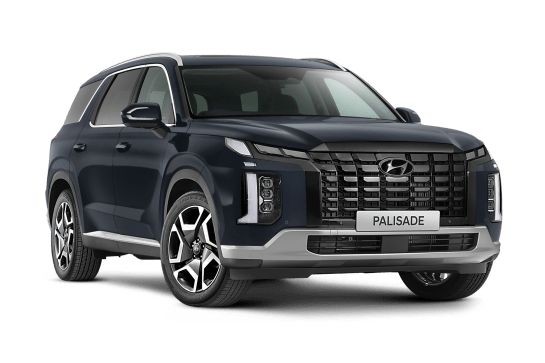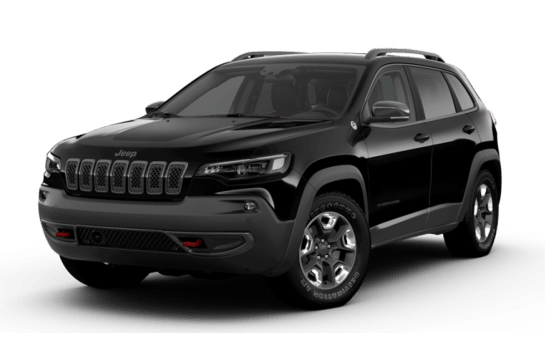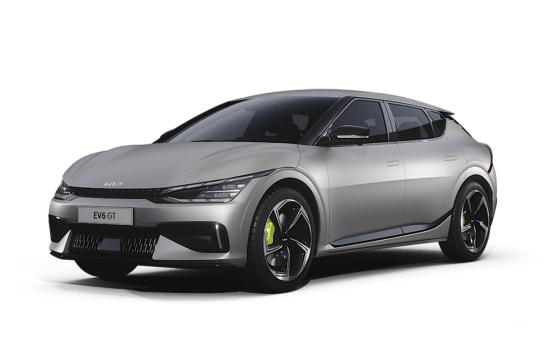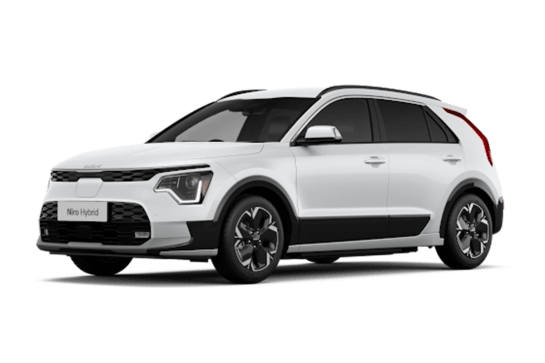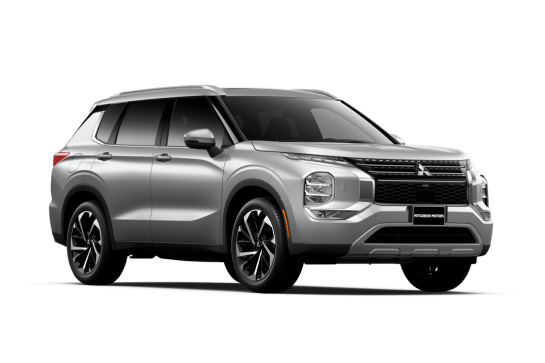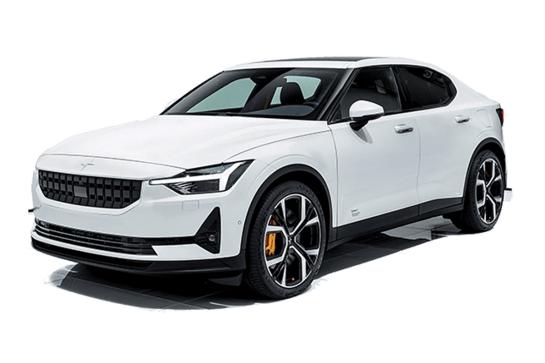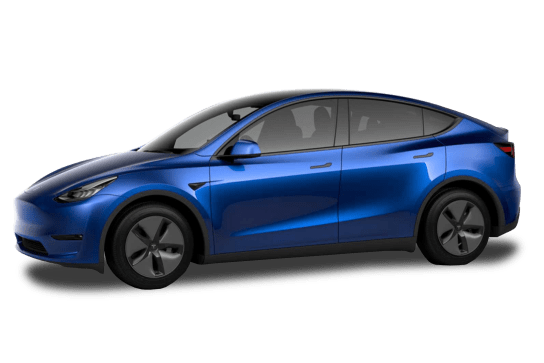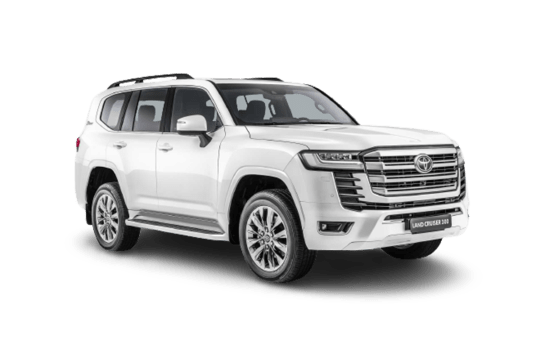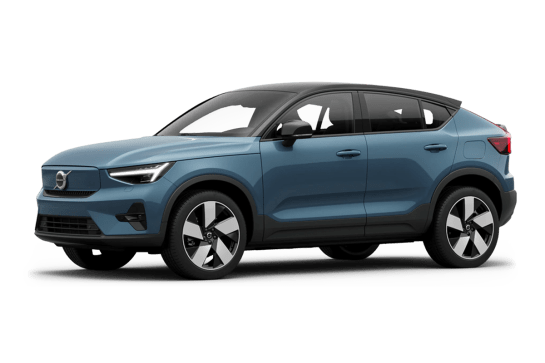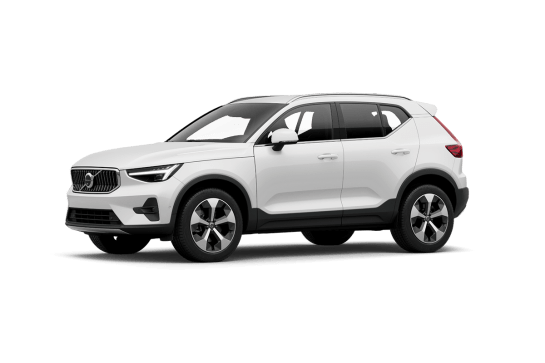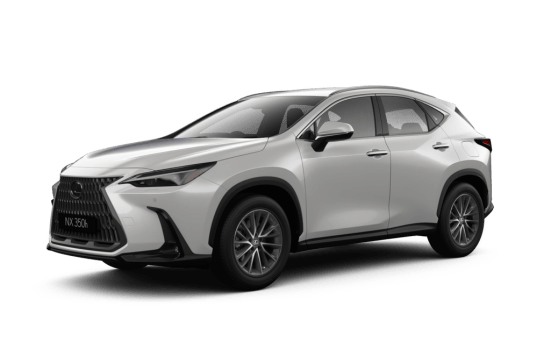
Lexus NX VS Toyota Land Cruiser
Lexus NX
Likes
- Affordability and equipment
- Elegant outside, luxurious inside
- Hugely quieter and more refined than before
Dislikes
- Driver-assist tech could use some Aussie road tuning
- Hard to tell apart from previous design
- NX 250 engine needs the open road to truly shine
Toyota Land Cruiser
Likes
- Handsome roadside presence
- Lots of practical and luxe features
- Pleasant on-road manners
Dislikes
- Servicing schedule is a pain
- Expensive compared to rivals
- Limited customisations with styling
Summary
Lexus NX
As far as clichés go, attempting to make “a silk purse from a sow’s ear” couldn’t be more apt than when contemplating the original NX of 2014.
What was essentially the Lexus-fication of the vocal, fidgety and thirsty old Toyota RAV4 may have worked a treat sales-wise, but proved trickier when assessed against the lens of a BMW X3, Audi Q5 and Volvo XC60 rival.
The earliest NX just wasn’t refined enough.
Read more about
This was especially true following the reborn RAV4 arrival in 2019, proving to be embarrassingly more competent – even compared to most luxury midsized SUV alternatives.
Now, finally, the NX redesign has followed suit, moving on to a variation of the Toyota’s stronger, quieter and more advanced TNGA architecture (dubbed GA-K) as a starting base.
Speaking of which, let’s dive straight into the least-expensive version, the NX 250 Luxury 2WD auto, to find out if the most popular Lexus model in Australia has finally found its mojo.
| Safety rating | |
|---|---|
| Engine Type | 2.5L |
| Fuel Type | Premium Unleaded Petrol |
| Fuel Efficiency | 6.9L/100km |
| Seating | 5 seats |
Toyota Land Cruiser
Australia has a long established love affair with the Toyota LandCruiser. The first owner was Sir Leslie Thiess, and he bought it to assist in the construction of what was, and still is, considered one of the most complex hydro schemes in the world - the Snowy Hydro Scheme.
Due to its proven ability to tackle some seriously hard terrain, it soon became almost synonymous with ruggedness and unbridled grunt.
Naturally, with a history like that there's some healthy rivalry between LC owners and, well, everyone who doesn't own one.
Read more about
- Toyota suspends shipments of HiLux, LandCruiser and more after 'irregularities' found during engine testing - Toyota Australia seeking information on local impact
- Coming soon! Is a Toyota LandCruiser using a hydrogen-fuelled combustion engine under study by the brand?
- Toyota to resume diesel engine production for HiLux, LandCruiser after Japanese government lifts shipment suspension
There have been no updates for the 2024 Toyota LandCruiser 300 Series but it's competing against heavyweights like the Nissan Patrol, Land Rover Discovery and the Toyota's cousin, the Lexus LX. All of which have seen some decent overhauls with tech or mod cons recently.
My family of three have been family-testing the GR Sport grade to see if the LC300 lives up to the legend or if it's competition is starting to nip at its heels.
| Safety rating | |
|---|---|
| Engine Type | 3.3L turbo |
| Fuel Type | Diesel |
| Fuel Efficiency | 8.9L/100km |
| Seating | 5 seats |
Verdict
Lexus NX9/10
So, is the cheapest Lexus NX the grade you’d skip? Depends on where you live and drive.
If you’re urban based and bound, save up a bit more and go the petrol-electric hybrid; otherwise, out on country roads especially, the spirited and sporty NX 250 is more than up to the task.
Either way, though, the latest NX is finally fit to fight the other premium brands’ medium SUV efforts, head on and held up high. Welcome to big mid league, Lexus.
Ignore or underestimate at your own peril, everybody else.
Toyota Land Cruiser8.4/10
The Toyota LandCruiser 300 GR Sport is a total knockout when it comes to its looks, comfort and practicality. It’s stupidly easy to drive and has a fuel efficiency that should make you swoon but the servicing is a bit annoying and it’s not the most affordable option on the market. However, even though it hasn't benefited from any updates this year, you don't feel like you're missing out on any luxuries.
My son adores it, wants it and will be very disappointed when we hand it back. Naturally, he gives it a 10/10.
Design
Lexus NX
Lexus says that nearly one million of the original-shape NX versions were produced, so there’s no way that the brand was going to mess with the styling of the latest version. Which explains why picking new from old is a serious case of trainspotting.
But that migration to the TNGA GA-K platform has brought some benefits from a design point of view. The styling now breathes more, especially when viewed rear-on, thanks to a body that’s 20mm longer and wider, as well as a handy 30mm wheelbase stretch.
Drilling into the details, the headlights have an LED ‘tick’ motif, the corporate ‘spindle’ grille isn’t as in your face and the rear gains ‘LEXUS’ lettering spelled out, probably to accentuate stance.
Crisp and elegant, the design works well. This is a handsome machine. Looks expensive too.
Toyota Land Cruiser
Design is 100 per cent subjective. I love the look of the LC300 GR Sport because it features what I feel is a timeless, handsome shape.
For some, it may look too big and brutish, because you could throw a bunch of beefy words at it, and somehow, they’d all fit the roadside presence of this extra-large SUV.
What visually sets the GR Sport apart from its siblings are the multitude of black accents across the body from the rear badging, wheels and arches, door handles and roof racks. The grille is also distinctly different in its horizontal design with the Toyota badging capitalised in a bold white font for extra effect.
Head inside and the cabin looks ruggedly capable with the dimensions of the centre console and dashboard complementing the external looks.
Technology looks upmarket, joinery is solidly put together and the leather upholstery adds to the plush comfort of the seats but there is a sense of capability in the physical buttons and dials still found on the dashboard.
Which is where I start to really like the LC300 GR Sport because everything is where you expect it to be - this is not a car you’ll get flustered in but nor does it have that generic Toyota look.
Practicality
Lexus NX
Though distinctively attractive and obviously well built, the previous NX was quite small for a medium-sized SUV inside, with tight rear legroom.
It also had a nonsense mouse-operated multimedia controller that was fiddly, annoying and counter-intuitive to use.
Thankfully, the new-from-the-ground-up design has rectified both these issues in the latest version.
Now the NX is properly medium-sized, and so easier to get in and out of, as well as palpably roomier front and rear. Employing the RAV4’s TNGA architecture results in a lower and roomier cabin, that benefits all in terms of packaging.
Being the entry-level 250, you might not expect much in terms of interior presentation or style, but Lexus Australia’s product planners have been deft in specifying this grade to make it look luxurious and on-brand.
Body-hugging bolstered perforated leather front bucket seats, in our example finished in a black/cream hue with orange stitching, belie the base-grade reality of the 250. This scheme is also found on the centre console, armrest and door cards, lifting the ambience no end. It looks, feels and smells expensive in here.
The only thing that seems to be missing is a smartphone charger. That's part of a $3K option pack that also throws in a sunroof and foot-operated actuation for the electric tailgate. Not bad.
Then there’s the driving position, with an electrically-operated reach/height adjustable steering column and a multi-configurable seat to help find the right spot. All-round vision is also better than you might expect, no doubt helped out by huge exterior mirrors and a large reversing camera screen.
Typical Lexus-style classy digital instrumentation, directly ahead, are positioned in such a way that you’re not really aware of/missing the available head-up display in higher grades. Though it takes a quick amount of familiarisation, all the info there is ultimately clear and easy to take in.
The same applies to the now touch-only centre screen, which has a slick rich finish and tactility, and also encompasses the climate-control display.
Along with banishing the dreaded mouse pad, kudos to Lexus for also installing physical switches or buttons for the most-used items – audio volume, temperature setting, and front and rear window demisting.
These and the simplified sub-screen menus for navigation, wireless telephony/audio streaming, vehicle diagnoses and vehicle settings amongst other features, is quickly second-nature in their accessibility and operation. And the sound system quality is great too.
One of our very few complaints concerns the Apple CarPlay experience, which seems needlessly complicated to return to if you temporarily switch away from it to the NX’s native multimedia system. Confusing and distracting.
Never mind. There are minivan levels of practicality at work here, from the superb and easily manipulated ventilation system to the seemingly endless storage options, that include bottle holder capability in the doors, a clever lid operation for the huge centre console and properly engineered cupholders.
Lovely lush materials of satisfying quality are further plus points.
We’re also fans of the NX’s electric door opening system with a failsafe handle, meaning you can grasp the door handle inside or out and a solenoid activated by a press in of a thumb releases the door quickly and naturally in a single action; it feels… upmarket and ergonomic once accustomed to.
Accessing the back seat is easy due to the latest model’s larger proportions. Much of the same applies out back as the front seat area in terms of quality of finish and attention to detail. Sculptured and enveloping backrests (adjustable for two reclining positions), a well-padded cushion and more-than-sufficient space for two burly adults or three smaller people means this NX is more family friendly than the swoopy exterior styling suggests.
We’re also happy to find large people-facing air vents, two USB and a 12V outlets, one-touch electric windows with that premium-car soft close mechanism, overhead LED lights, grab handles, centre armrest with cupholders, map storage behind both front seats, coat hooks and good lines of vision further enhance the appealing and comfortable back seat environment. It feels like a Lexus should.
Further back than that, after releasing the electric tailgate via either an interior button or exterior switch, you’ll find that the boot has a fairly high loading lip, but then offsets this with a long, flat floor with matching levels of appropriate-quality finishes. Another 12V plug and two bag hooks are included, along with ample lighting and tie-down hooks. There’s also a hidden deep storage compartment underneath the floor, due to the discontinuation of a spare wheel (due to runflat tyres, remember).
Capacity is rated at a fairly ordinary 520 litres, extending to 1411L with the split/fold backrests folded. You’d expect a remote actuation for the latter like Mazda wagons have had for decades, but none is found at this price point.
Note there is no solid cargo cover either, just a flexible/flimsy fabric item that’s foldable and easily stored.
Overall, though, despite of its base positioning within the NX hierarchy, the 250's interior experience is in keeping with the brand's image.
Toyota Land Cruiser
The front row is roomy and even with a co-pilot, you feel like you have yards of space to settle into. The seats offer a wide seat and plush padding, as well as heat and ventilation functions which adds comfort for longer trips.
Individual storage is good with a large glove box, two cupholders, two drink bottle holders and a large middle console that also features a 'cool box' function for drinks or snacks.
The comfort of the front is replicated in the backseat, which deftly accepts the height of my 183cm father. The width of the seat can easily accommodate three adults in relative comfort or, if you have a few tots in tow, three child seats.
Amenities and storage in the back row are what you'd expect for a top model in this class. The rear outboard seats feature heat and ventilation functions and there is dual air-conditioning and climate control, as well as, four directional air vents.
The fold-down armrest features two cupholders while the doors hold a drink bottle each and a small storage bin. There are also two map pockets and you can access the middle console cool box with a rear-mounted button.
The GR Sport does remind you that it's a big car with its 235mm ground clearance and my seven-year-old son declared I needed to hold all of his stuff this week as getting in and out is a ‘two-handed- operation'. Like him, I too am grateful for the grab handles and side steps in this car.
The technology is well-rounded and simple to use. The 12.3-inch touchscreen multimedia system looks great and is responsive to touch. It has built-in satellite navigation and a Toyota Connected Services app with three years of complimentary updates. There is also wired Apple CarPlay and Android Auto, AM/FM radio and DAB+ radio but there’s not much else to access in this system.
The mostly analogue instrument cluster features a 7.0-inch tech screen and this is where you can do a lot of your customisations with display and safety.
The charging options are solid up front with the choice of a USB-A and C port, 12-volt socket and a wireless charging pad. The rear gets two USB-C ports and a 12-volt socket as well.
The boot is cavernous with its 1131L of luggage capacity and that’s with all seats in use. The squared shape of the boot and the 90-degree angle the boot lid opens to are quite practical, especially when fitting bulky items or loading things in the rain.
All GR Sports come with a powered boot lid and a domestic 220-volt socket for charging larger items while adventuring.
Price and features
Lexus NX
Priced from $60,800 (all prices are before on-road costs), NX 250 Luxury equipment levels are – in a word – generous for an entry-level proposition. In fact, we thought our test vehicle arrived jam-packed with options, but what’s in the photos is standard fare.
There’s no scrimping on safety, for example, with eight airbags, autonomous emergency braking (AEB), front and rear cross-traffic alert, blind-spot monitor, lane-keep and steering assist, adaptive cruise control, LED lights with auto high beams and Safe Exit Assist – which won’t allow doors to open if vehicles or cyclists are whizzing by and in danger of being struck. Clever.
The NX 250 also scores keyless entry/start, a 9.8-inch touchscreen featuring ‘Hey, Lexus’ voice control, sat-nav, Apple CarPlay/Android Auto, digital radio, powered steering column adjustability, electric front seats with heating, dual-zone climate control, a powered tailgate and 18-inch alloys running on 235/50 runflat tyres (so no spare wheels whatsoever).
About the only thing we’d like is a smartphone charger, though that’s available as part of a $3000 Enhancement Pack 1, which also throws in a sunroof and kick-sensor activation for that powered tailgate. All for under $64K. Job done.
This is provocative pricing. A base Genesis GV70 RWD starts at $68,500, a Q5 35 TDI diesel FWD costs from $68,350 or nearly $73,000 for the quattro petrol AWD – as does XC60 Plus B5 AWD, an X3 sDrive20i RWD is $76,600 and a GLC 200 RWD is now from $77,305.
Even with the Lexus’ EP1 box ticked, they make the NX 250 seem like conspicuously good value for money.
You’ll find luxuries like leather, adaptive headlights, instrumentation head-up display, a larger touchscreen, vented seats, surround-view camera, premium audio and 235/50 R20-sheathed 20-inch alloys in the bestselling 350h hybrid grade, in either swishier Sports Luxury or racier F Sport grades; both begin at $73,100, AWD adds $4800 and another (rear-sited) electric motor, while that price also covers the rapid and non-hybrid 350 Turbo AWD F Sport.
The flagship NX is the 450h+ F Sport AWD plug-in hybrid electric vehicle (PHEV) from $89,900. The company’s (and Toyota’s) first such tech for Australia.
All NXs include Lexus’ ‘Encore’ aftersales subscription program offering myriad offers and services including “free” car rental.
Toyota Land Cruiser
The LC300 series is offered in six grade levels for our market and the second-from-top-spec GR Sport model (the Sahara ZX is slightly more expensive) is on test here. It’s priced from $145,876 before on-roads which is almost $4K dearer than last year’s pricing but doesn’t feature any new upgrades.
Its price point also positions it more towards the top-end of the upper-large SUV market, compared to its rivals. Sitting at the top of that list is the Lexus LX500D F Sport at $180,061 MSRP and then the Land Rover Discovery D300 at $129,020 MSRP.
The most affordable rival is the Nissan Patrol Warrior for $104,160 MSRP but it's important to note that the Patrol is only available with a hefty 5.6L V8 petrol engine, there's no diesel variant. Which is something to consider when you're at the bowser.
In terms of luxuries, there is a heated steering wheel, powered front seats with heat and ventilation functions, leather upholstery and synthetic leather trims throughout. The rear outboards seats also have heat and ventilation functions and a sunroof comes standard.
The technology looks premium with a 12.3-inch touchscreen multimedia system and a 7.0-inch digital instrument cluster headlining the dashboard. There's some 'old world' charm with the CD/DVD player at the front.
Tech is rounded out by the wired Apple CarPlay and Android Auto, built-in satellite navigation, Toyota Connected Services App, head-up display, three USB-C ports, one USB-A port, two 12-volt sockets and a wireless charging pad. There is also a 220-volt domestic socket located in the boot and a premium 14-speaker JBL sound system.
The key practical features include a powered tailgate, cool box (middle console), four-zone air-conditioning and climate control, push-button start, keyless entry and a full-size spare wheel.
Under the bonnet
Lexus NX
There are two ways of looking at this.
Yes, the NX 250 is powered by a variation of the same engine found in the humble base Camry Ascent in Australia at almost half the price. On the other hand, it’s a Toyota powertrain and everything that’s good and reliable and dependable about that. Which is not always the case with premium SUVs.
Dubbed Dynamic Force, which may imply forced-induction like a turbo or supercharger but there isn’t any, the 2487cc 2.5-litre naturally aspirated direct-injection D-4S twin-cam four-cylinder engine delivers 152kW of power at 6600rpm and 243Nm of torque at between 4000rpm to 5000rpm.
Drive is sent to the front wheels only, via an eight-speed torque-converter automatic. Tipping the scales at a pretty hefty 1705kg, it’s nonetheless the lightest NX, and manages a power-to-weight ratio of 89.1kW per tonne. That’s about the same as a GLC 200, which uses a 2.0-litre turbo petrol engine.
Toyota Land Cruiser
The LC300 models all share the same 3.3-litre V6 twin-turbo diesel engine that produces a hefty 227kW and 700Nm of torque. Making it powerful enough to easily handle its 3.5-tonne braked towing capacity.
The GR Sport has a 10-speed auto transmission and has a full-time 4WD system with high and low range. It also has front, rear and centre diff locks, so adventuring pursuits should be a breeze but check out Crafty’s off-road review on this model for more 4WD insights.
Efficiency
Lexus NX
Rated Euro6b, the NX 250 demands 95 RON premium unleaded petrol. Same as Camry, actually,
We recorded a decent 9.7 litres per 100km during our time using the NX 250 in city, urban and rural conditions, against the trip computer’s 9.5L/100km and the official combined average of just 6.9L/100km.
Note this may be so because there was a lot of fast back-road driving, as the engine loves a rev and there’s a palpable wave of power that comes on strongly between 5000rpm and 6500rpm. A bit like Mazda’s naturally-aspirated units, but just not as sonorous.
At 55 litres, the fuel tank will allow for up to 797km based on the combined average cycle between refills.
Toyota Land Cruiser
It's big and has a lot of power, so it should be pretty thirsty ... right?
Wrong! The official combined fuel-cycle consumption figure is 8.9L/100km and my real world usage came out at 9.8L/100km after doing a mix of long open-road trips and some urban stuff.
Based on the official combined fuel cycle and the two fuel tanks, which equal 110L, you’d be able to get a theoretical driving range of 1236km.
Driving
Lexus NX
The NX 250 truly is a tale of two cars.
Around town, it is utterly capable and benign. The 2.5-litre atmo four-pot petrol unit is a revvy, raucous sort of engine, pulling away strongly off the line, responding quickly to pressing down on the throttle, shuffling up through seven of the lower gears smoothly (top is a highway overdrive), and generally being an easy vehicle to drive.
About the only concern is how noisy the engine can become if you’re needing to accelerate hard, with a definite mechanical zing that gives the Lexus a bit of a hoon attitude. We’re also a little hesitant about using the Sport mode in built-up areas, as ratios are held on to whether up or down shifting, amplifying the loud nature of this powertrain.
Other aspects of the NX 250’s driveability around town rate highly: light yet linear steering, with a tight turning circle providing easy manoeuvrability and parking; firm yet still absorbent suspension, offering an appropriately isolating ride over most bad road surfaces; and an overall sense of sound engineering. It seems quieter than an equivalent RAV4, more importantly.
Which led us to initially conclude that, in an urban environment, you’d naturally pay the extra $3K for the NX 250 Hybrid, to eliminate that noisy engine when pushing down hard on the throttle. Easy.
However, then we ventured out on a long rural drive, a few couple of hundred kilometres from the big city. On country roads, the NX 250 really sparks up in a most compelling way.
Yes, the engine is still a bit rowdy, but as the revs rise and the needle edges near the 6800rpm red line, the Lexus just keeps on building up speed rapidly, providing an unexpectedly sporty edge. Above 5000rpm this thing still has plenty of oomph, relying on a deep well of power to really extend its legs.
It also makes sense to slot the auto lever into manual, and use the finely positioned paddle shifters. That’s when you’re most aware of the gearbox being a torque-converter auto, with defined and assertive selections. It’s a good way to feel involved in the experience too.
Actually, as a mechanical ensemble, it all comes together at speed; that light and easy steering remains relaxed yet reactive, weighing up nicely if you choose Sport. The handling maintains a fluid, connected feel, with ample levels of grip from the Bridgestone tyres.
It occurred to us that driving the NX 250 Hybrid out on rural backroads would deny the enthusiast of the base model’s lightness and agility, since the latter weighs hundreds of kilos less; the brakes are perfectly modulated instead of feeling vaguely mushy and/or trigger happy as with many electrified SUVs; and – even with the road noise being well-supressed – you’re far less aware that the atmo petrol engine is singing loudly at speed.
Plus, the ride out in the sticks, even on our craggy old test strip that would jar the bones of some other midsized SUVs, remains calm and comfortably firm. That’s real progress for the NX.
We’d appreciate a bit more nuance in the way the stability control kicks in (quite late) to catch the tail; while the driver-assist tech like the adaptive cruise control and lane-keep assist do their jobs admirably, the latter’s constant chiming can be annoying; and there's a fair amount of road-noise intrusion over coarse bitumen. Like most midsized luxury SUVs, actually. Still quieter than a RAV4, though.
No jarring faults then. Lexus has done its homework and fixed most of the things that annoyed or infuriated us about the previous generation version. Good work.
Toyota Land Cruiser
The GR Sport is a massive car but it doesn’t handle like one. That's not to say it handles like a small car but it doesn't feel like a truck to drive.
The power is effortlessly gutsy and there's no issue keeping your speed consistent on hills. The 10-speed auto transmission manages its gear changes and power hits smoothly. The rumble of the V6 engine is also quite therapeutic when it comes time to tackle an overflowing causeway or muddy road.
The GR Sport feels solidly grounded and even on winding roads, the roll in corners isn’t bad at all. Less so than a Prado, actually.
The ride comfort is very good in the GR Sport grade as it has special adaptive suspension and that means that you really aren’t bothered by the road surface. Besides some whistling from the roof racks, there’s also little outside noise and it feels refined in the cabin because of it.
The wide windows and high seating position offers great visibility all around but I'm very aware of how large the car is as I can't see my son when he walks around it. The sensors alert you but make sure all kids are accounted for before you start moving.
Despite its size, the GR Sport is very nimble to manoeuvre with a small 11.8m turning circle and steering that is responsive.
Parking has been no issue for me this week and while the 360-degree view camera is a bit too fish-eye lense for me, its clear and you get used to it pretty quickly.
Safety
Lexus NX
Tested in July, 2022, the latest NX range delivers a five-star ANCAP crash-test rating. It managed high scores in all four categories: Adult, Child and Vulnerable Road User protections, and Safety Assist technologies.
You’ll find eight airbags (providing coverage to all outboard occupants, also taking in dual-front occupant knees and centre item to stop lateral head strikes).
The AEB system with intersection assist works between 5-80km/h for pedestrian and cyclist detection and works day and night, while the car-to-car protection works between 5-180km/h.
Then there’s lane-tracing, lane-keep and steering assist, that works between 50-200km/h, as well as blind-spot monitoring, adaptive cruise control with stop/go functionality, auto high beams, road sign recognition, front as well as rear cross-traffic alert, reverse parking cameras, all-round parking sensors, tyre pressure monitors and Safe Exit Assist – which won’t allow doors to open if passing cyclists or pedestrians are in danger of being struck.
There’s also Intersection Turn Assist, providing early brake activation if required, Emergency Steering Assist (extra steering assistance to help keep the vehicle in its lane) and Emergency Driving Stop System.
As with most new vehicles nowadays, anti-lock brakes with brake-assist and electronic brake-force distribution is also standard, along with stability and traction control systems. Lexus provides three rear-seat child-seat tether anchorages and two ISOFIX latches, fitted to the outboard positions of the back bench.
Toyota Land Cruiser
The GR Sport is the only grade not covered by the LandCruiser 300 Series' 2022 five-star ANCAP safety rating.
Toyota doesn’t have any plans to get it rated but it still features all of the safety equipment of its top-spec Sahara siblings.
Standard items include AEB, adaptive cruise control, lane keeping aid, lane departure alert, traffic sign recognition, blind-spot monitor, rear cross-traffic alert, 360-degree camera system, trailer sway control, parking sensors (front and rear), and a rear parking support brake.
Other safety highlights include an alarm system, SOS emergency call button, stolen vehicle tracking and an automatic collision notification system.
The GR Sport has 10-airbags but misses out on the newer front centre airbag.
There are ISOFIX child-seat mounts on the rear outboard seats and three top-tether anchor points. You can absolutely get three child seats installed but you miss out on a third row due to the grade level. Which might be a bummer for larger families who are wanting this spec.
Ownership
Lexus NX
Since the beginning of 2021, Lexus offers a five-year, unlimited kilometre warranty with roadside assistance. It used to be four years.
Service intervals are at 12 months or 15,000km, whichever comes first.
The NX also includes three years and 45,000km of capped-price servicing, with each one costing $495 – and as we’ve noticed in the recent past, that is very highly competitive pricing for a luxury brand.
Plus, there’s also Lexus’ ‘Encore’ aftersales subscription program offering myriad offers and services.
Toyota Land Cruiser
The GR Sport comes with a five-year/unlimited kilometre warranty and if you stick to your service schedule, you get an additional two years of engine coverage.
There is capped-priced servicing for up to five years or 100,000km, which entails a total of 10 services or two a year as servicing intervals are a pain at every six months or 10,000km, whichever occurs first.
Services are $400 which equates to $800 per year, which is a bit expensive but not outrageous for the class.









